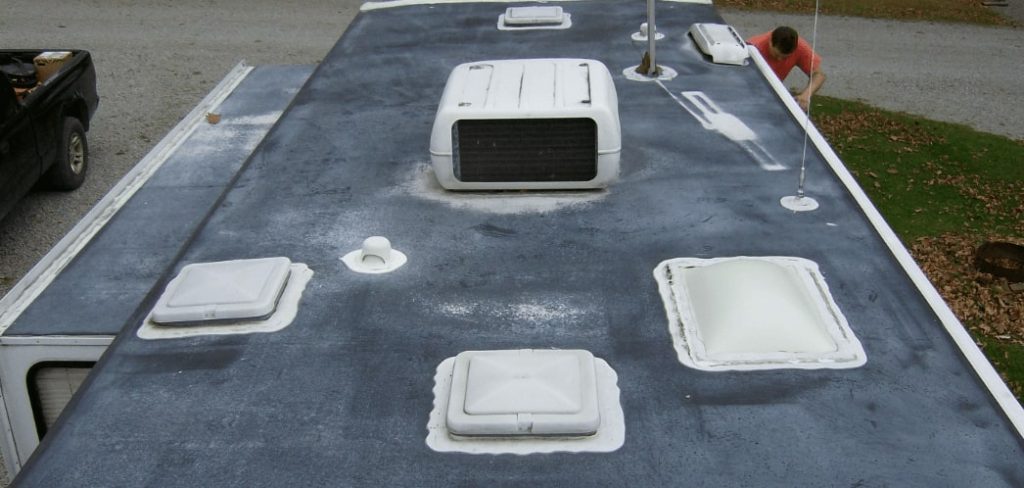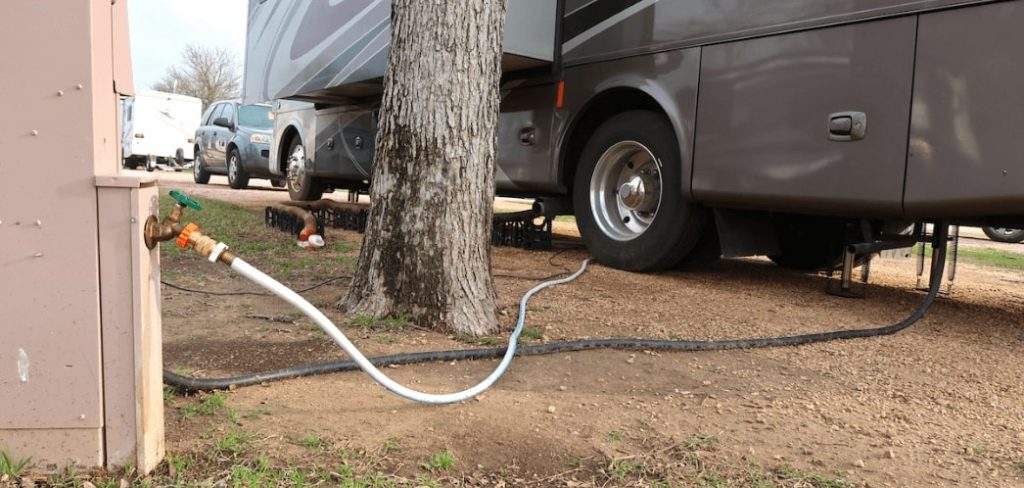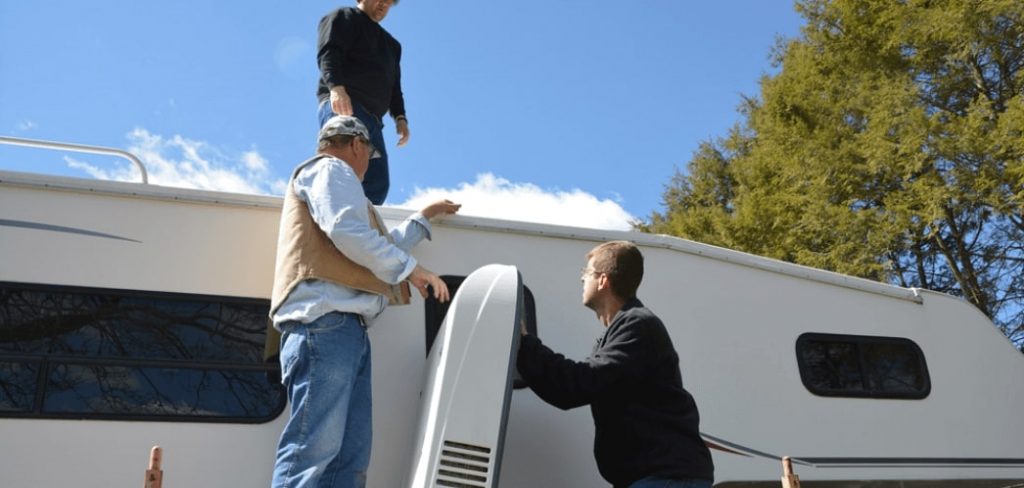The Booming RV Market in Australia: Trends and Insights
11th December 2024The RV industry in Australia has experienced extraordinary growth in recent years, evolving into a $27.1 billion powerhouse that plays...

A step-by-step guide on cleaning the inside and outside of your RV clean
RVs can get messy very quickly because of the foot traffic they experience. Moreover, driving and parking in the dirt, and travelling through various weather conditions can also put your RV through a lot. Long-distance travelling with onboard food and lodging also certainly does not help matters. Nevertheless, a little tidying up can go a long way, and the feel of a neat RV complements one’s travel experience. To boot, keeping your RV clean also makes it easier to avoid normal wear-and-tear from year-round travelling.
The chore of cleaning a large RV may seem daunting, but if you keep doing little things frequently in your daily routine, you can complete tidying up your travel vehicle without doing too much all at once. It isn’t necessary to go about cleaning your RV in one go. Instead, you can take baby-steps and clean your RV at your own pace, following a routine that is preferable to you.
Your RV has many areas- both inside and outside that eventually need a good cleaning. There are many products you can find that are specifically designed to clean RVs.

Simultaneously, you can also make use of household items and cleaning products to wash and declutter your vehicle. Given below is an array of our best tips and ideas on how to go about cleaning your RV, from removing black gunk and streaks from your camper’s outside to using the right kind of cleaners for your RV windows.

Most RVs are quite large, and cleaning them can be a bit overwhelming. The best start is beginning with a good spray down. It helps remove dirt and grime while also reducing the ultimate workload. Hosing the exterior also helps loosen hard-to-clean grime that may need more dedicated scrubbing later on.

Needless to say, cleaning your RV works best when you are doing it from top to bottom, rather than the other way round. If you start scrubbing at the bottom first, you will eventually have to clean your RV twice, as dirt and grime would streak down while you clean the top. Also, maintaining the roof of your RV is crucial to avoid interior leaks or other problems.

Most RV roofs are constructed from membrane roofing, while other RVs have metal roofs. If your RV has a metal roof, you can wash it the same way you clean your vehicle exterior. However, if your RV roof is made of a modern membrane, you will need specialised cleaners. You can find specialised membrane roof cleaners at many RV and Camping stores.
Correspondingly, you can utilise the cleaning time to inspect the roof of your RV for any tears or cracks as well. Damage to the roof can occur due to constant exposure to outdoor elements. UV rays and other environmental factors continually beaming down on the RV can take its toll. RV paint can often start to fade because of this, and products made from rubber and vinyl can dry out, crack and deteriorate. To avoid this, keep your RV covered when parked outside. You can find RV covers in RV stores as well.

Breaking the chore of cleaning your RV into sections can make the task feel less overwhelming. You can visually divide your RV exterior into quarters, and work on each section. How about starting with cleaning the front, and then eventually making your way to the back? You can also do it for the RV interior.

Of course, you will get black grime and dirt-streaks on your RV while travelling. Your RV can look worn out and run-down if it has rough black streaks running across its exterior. To remove the grime, you can use cleaning products that are designed for RV exteriors. Simply spray the cleaner on the streaks and use soft-bristled brushes to remove the stain. The best way, however, is by applying good old elbow-grease.

You can clean your RV window and door seals — which are most typically made of rubber — with a mild detergent or specialised cleaners. Because the seals are made from rubber, they tend to attract a lot of bugs and dirt. In this case, you can use a cleaner that will clean and moisturise the seals to help them last longer. This is especially important if you are driving in an arid landscape.

The job of cleaning the RV awning can be bothersome. Here is a tip that can help resolve this: remove the awning leg. If you remove the metal awning leg, the awning will fall flat against the side of your RV. You can then scrub your awning against the nice hard backdrop of your vehicle without having to worry about stressing your awning’s material or poking a hole through it. This process of cleaning the awning is much easier and faster.

Rusty old propane tanks can make your RV look dinky. If you generally tend to refill your tanks, consider switching out your decrepit old tanks with new ones. You can also opt to give your old tanks a fresh coat of paint if they are in good condition. Clean, bright tanks can help your RV look tremendous and elevate its overall appearance.

When it comes to handsome adventure-wagons- shiny, sleek black tires play a big part. Most cleaning agents available commercially are perfectly suitable for RV tires. You can scrub them with a brush and cleaner, and finish em’ up with shine spray.

Give your freshwater tank a good flush at regular intervals to maintain the quality of the water you consume. While cleaning, open up your valve and clear the tank. Then run a clean hose to eliminate any wayward mineral your tank might have collected from hard water or debris. Additionally, we suggest you use special freshwater tank sanitisers found in RV stores.

Waxing and polishing the exterior of the RV is time-consuming. But doing so helps extend the life of your RV. After hosing and cleaning are done, you can finally wax and polish your vehicle using a quality product formulated for your RV exterior surface type. It will leave your RV looking shiny and new.

While cleaning the interior of your RV, start with the spray-and-wipe process. Begin from the kitchen: wipe clean countertops, tables and appliance exteriors- like your microwave, the stove, and oven. Then wipe clean your cabinet doors.
After the kitchen is covered, wipe all surfaces in the living space. Dust all of the surfaces, and wipe everything that is frequently touched. Wipe clean the doors, knobs, tables and lamps. From the living room, you can then move to the bathroom. Clean the bathroom and toilet with a strong disinfectant, and wipe down faucets, knobs and handles.

The RV interior’s small and congested area means dust and debris can quickly fill up its nooks and crannies. Standard vacuum cleaners are too big and bulky for most RVs, so we recommend using a high-quality handheld vacuum. It’s even better to use a small handheld vacuum with a hose attachment to reach small spaces.


The best way to clean your RV’s window screen is to remove it and give it a good spray-and-wipe clean. Doing so can dislodge fluff, bugs and grime from your windows. If your RV has fixed window screens, you can opt to vacuum them while cleaning your RV interior.
You can begin cleaning your RV window first by removing the curtains and washing them. If you use blinds, then you can take them off and hose them down too. If your blinds are fixed, you can simply wipe it with a microfibre cloth and soapy water. You can dip the cloth in water and clean each set of blind slate individually.
With the curtains cleaned, you can continue by opening every window and removing the screen. Using a damp cloth, clean the dirt from all window sills, and other nooks and crannies. Finally, close the windows, clean them from the inside using cloth and water, or other cleaning products.

Decluttering cabinets and the fridge leaves the RV feeling comfortable. While cleaning, take everything out of the refrigerator, the freezer and the cabinet, and check for expiry dates. It will help you dispose of any items that are past their prime. After emptying your cupboards and fridge, you can then wipe them clean, removing any crumbs or sticky leftover spills that might attract pests.

Over time, the heating vents on the RV can accumulate dust and debris. The accumulation of dust on air filters slow down the circulation of fresh air inside your vehicle. It can sometimes also trigger allergies. While cleaning, take your air filters outside and have them hosed down. You can also remove the covers off heating vents and vacuum old food crumbs that may be inside. Finally, sweep away any wayward dirt clods.

Mould and mildew tend to thrive in high-moisture spaces, and they can make the RV look old and ill-maintained. For this, it is best to reduce the moisture within your RV. Typically, about 50% to 60% of humidity is ideal for relative comfort and health. To reduce high humidity levels in your RV, you can run your air conditioning in humid environments, open windows and doors when possible, and keep moisture-absorbing packets in closets and storage areas.

While you are travelling, sweeping the floor and moping becomes a daily chore. Thoroughly clean away any dirt and mop the floor with cleaners regularly to keep your RV neat and tidy.

While it is relatively easy to get on the road and go on without changing your linens and mattress-sheets for two, three or even four weeks, it is best to avoid sleeping on unchanged sheets and linens continuously for long periods. Change your bedsheets and linens at least every 3 to 4 days. Dirty linens can leave you feeling grimy as they fill up with sweat and dead skin cells with every use. Always travel with at least a set of two linens for a quick sheet-change.
If you do not routinely maintain your RV, it will likely give you more cleanliness issues. Your RV can become dirty and grimy if it has irregulated smoky exhaust, loose oil, and other problems.
You can keep your vehicle running smoothly through proper and regular maintenance, so it doesn't trouble you on the road. You can utilise your time of cleaning the RV to perform vehicle maintenance as well. As you clean, you can look for things that might need to be repaired or adjusted. For example, when you clean your tires, you can check for possible plunged nails, or see if weather or not the tire’s tread is in good condition. Frequent cleaning allows you to examine your RV regularly and instantly identify issues.
The best time to wash and examine your RV is after returning from each trip. Try to perform a routine examination of your RV before starting your journeys as well. In like manner, always perform a basic check-up of your vehicle before starting your RV again while on the road.
Fogged windows are a nuisance that can sometimes interfere with the driver’s vision and become a safety risk. Usually, foggy windows are prevalent in old RVs exposed to outdoor elements for too long.
To get around this, you can remove the window assembly, then completely dismantle it. Then, you can clean or replace individual panes of tempered glass. To reseal it, use desiccant-embedded rubber spacers coated with secondary external sealer. Moreover, you can take your RV to a repair shop and have them do it for you.
To remove your RV window screen for cleaning, press a small metal scraper into the screen-opening at the bottom of your screen. When you do that, it generally tends to slide out. Once it slides out, you can take it off and clean it. To put it back in after cleaning, you can use your metal scraper again to adjust it properly and slide it back into its original place.
For cleaning, make sure you have disinfecting wipes, all-natural toilet bowl cleaners, mini-surface cleaner for everyday wipes, and similar products. Additionally, you can also use home remedies, like bleach and water vinegar solutions for cleaning doors and windows. You can also use washing powder for your RV exterior as well. To boot, make sure that the cleaner you use for your RV’s toilet is made for RVs, or else you can run the chance of damaging your RV’s plumbing.
Since the RV area is small, you can use compact cleaning products that snugly fit in your RV without taking up too much space. You will want to use a compact vacuum cleaner as it is easier to store in a small area. You can also opt to use mops with small footprints, step stools that fold, and similar small items. Find tools that get the job done without taking up too much space.
READ THE LATEST FROM EMPRISE GLOBAL FOR GUIDES & TIPS

The RV industry in Australia has experienced extraordinary growth in recent years, evolving into a $27.1 billion powerhouse that plays...

The 2024 Volkswagen Caddy Cargo has received a significant mid-life refresh, enhancing its safety and convenience features while maintaining the...
SOME PRODUCTS YOU MIGHT BE INTERESTED IN